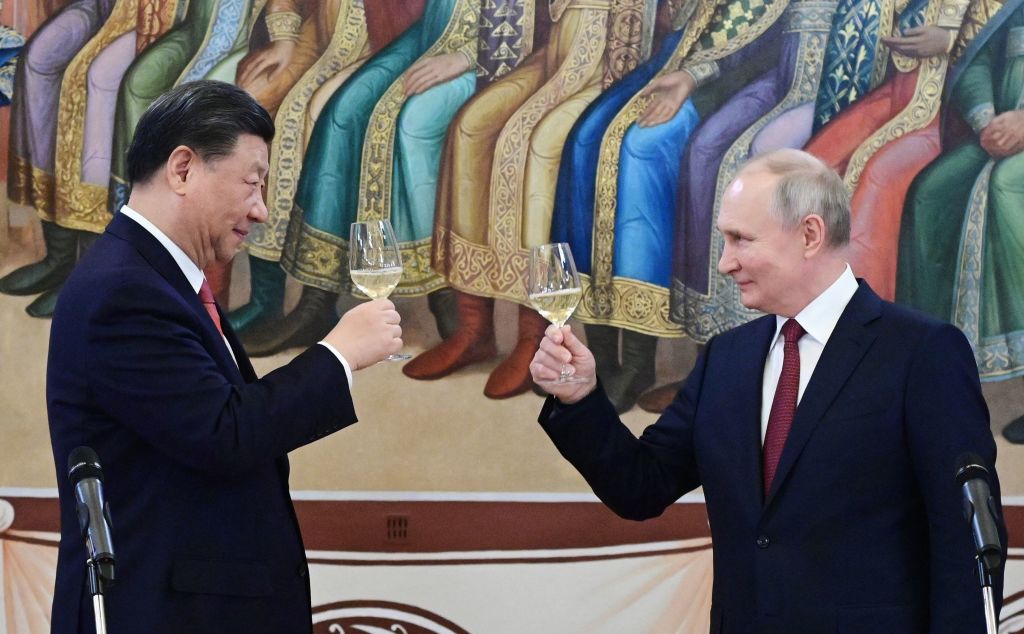
US President Joe Biden brought the leaders of allies Japan and South Korea to Camp David last month to discuss how to contain China and counter Russia’s influence—for example, in Africa’s Sahel region, which has recently experienced a string of coups d’état. Meanwhile, leaders from the BRICS countries—Brazil, Russia, India, China and South Africa—gathered in Johannesburg to criticise the West’s dominance over the international institutions established after World War II. It was enough to give Cold War historians déjà vu.
The West’s main adversary today is China, not the Soviet Union, and the BRICS is no Warsaw Pact. But with the world entering a period of uncertainty following the demise of the post–Cold War order, the parallels are sufficient to convince many to turn to pre-1989 conceptual models to gain insight into what might come next. This includes the US and China, though each is betting on a different model.
Between the end of World War II and the fall of the Berlin Wall, the two main forces defining the international order were ideological conflict, which split the world into two camps, and the quest for independence, which led to the proliferation of states, from 50 in 1945 to more than 150 in 1989–1991. While the two forces interacted, ideological conflict was dominant: struggles for independence often morphed into proxy wars, and countries were forced either to join a bloc or define themselves by their ‘non-alignment’.
The US seems to think a similar dynamic will dominate this time around. Faced with its first peer competitor since the fall of the Soviet Union, Washington has sought to rally its allies behind a strategy of ‘decoupling’ and ‘de-risking’—essentially an economic version of the Cold War policy of containment.
Whereas the US may be expecting Cold War II, shaped primarily by ideological polarisation, China seems to be betting on global fragmentation. Yes, it has tried to offer non-Western countries an alternative to Western-dominated institutions such as the G7 and the International Monetary Fund. But, in China’s view, the quest for sovereignty and independence is fundamentally incompatible with the formation of Cold War–style blocs.
Instead, Beijing expects a multipolar world. While China can’t win a battle against a US-led bloc, President Xi Jinping seems convinced that it can take its place as a great power in a fragmented global order.
Even America’s closest allies aren’t immune from the trend towards fragmentation, despite US leaders’ best efforts. Consider the recent Camp David summit. Though some media were quick to herald a ‘new cold war’, the participants’ interests diverged in several ways.
South Korea’s main focus remains North Korea, and the intelligence-sharing agreements and nuclear consultations announced after the summit were as much about signalling a resolve to push back against North Korean dictator Kim Jong-un’s regime as they were about countering China. Japan, for its part, is eager to avoid strategic escalation over Taiwan—a development that would threaten its economic model, which depends significantly on trade with China (including in semiconductor-related technology). And both South Korea and Japan are unhappy with the zeal with which America is pursuing its de-risking strategy.
As for the situation in the Sahel, it has all the features of a classic Cold War proxy standoff. Since Burkina Faso, Guinea and Mali succumbed to military coups, the US and France have come to rely on Niger’s government as the last bastion of Western support in the region. Under the late Yevgeny Prigozhin, the Russian mercenary army Wagner Group gained substantial influence over Mali’s governance and practically ran the Central African Republic. The last thing the US and France want is for Wagner to gain another foothold in the region.
But now that Niger’s government, too, has been ousted by the military, American and French responses have diverged sharply, allowing the country’s new rulers to have their cake and eat it. The military junta has requested Wagner’s assistance to stave off the threat of intervention, but appears willing, at least for now, to allow the US to continue operating drone bases in the country.
Perhaps the biggest news, though, was the BRICS’ announcement that six countries—Argentina, Egypt, Ethiopia, Iran, Saudi Arabia and the United Arab Emirates—would become full-fledged members by the beginning of next year. Pre-summit editorialising notwithstanding, China is under no illusion that countries like Saudi Arabia and the UAE will join it in a bona fide anti-Western bloc; Beijing’s goals are more subtle.
Joining the BRICS increases countries’ freedom of action—for example, by increasing access to alternative sources of financing or, eventually, providing a genuine alternative to the US dollar for trade, investment and reserves. A world in which countries are not dependent on the West, but free to explore other options, serves China’s interests far better than a narrower, more loyal pro-China alliance ever could.
The picture that emerges is of a world in which the superpowers lack sufficient economic, military or ideological clout to force the rest of the world—in particular, the increasingly confident ‘middle powers’—to pick a side. From South Korea to Niger to the new BRICS members, countries can afford to advance their own goals and interests, rather than pledging fealty to the superpowers.
Contrary to how it may appear to many, not least in the US, the new cold war seems to be based not on the old logic of polarisation, but on a new logic of fragmentation. Judging by the growth of the BRICS, there’s no shortage of countries that find that new logic enticing.

